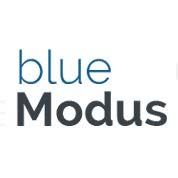
WebAIM has been conducting surveys on web accessibility for years (see WebAIM projects), including a survey of Screen Reader users since 2009. The most recent survey was published in September 2019.
I encourage everyone to read through their results and analysis as it won’t take long, but here are the four key insights I found.
Note: Numbers rounded to the nearest full number.
#1 - The technology landscape for screen readers is fragmented, but usage is not.
A predominant number of users rely only on a handful of platforms and technologies. More is always better when it comes to testing, but given the scarcity of time, talent, and treasure, I would expect the best ROI by prioritizing the following list:
- JAWS on Chrome on Windows
- NVDA on Firefox on Windows
- VoiceOver on iOS/Safari
This gets you coverage for:
- 87% of Desktop OS usage
- 70% of mobile OS usage
- 94% of screen readers
Where is MacOS? Based on the data, Mac usage is less than 10%, and that 85% of those users in the survey appear to be developers without disabilities using it for testing purposes.
Trend wise, for the first time, Chrome usage surpassed Firefox’s and NVDA surpassed JAWS.
#2 - Page Headings are the top navigation feature.
When asked about how they navigate a lengthy webpage 69% said they try to use page headings first, and 86% said that heading levels are useful.
For context, more than twice as many people (7% vs 3%) will just read the whole page rather than use landmarks.
Rather than styling div, p, and span tags to look different, structure your content using actual headings (h1-h6) which provide explicit hierarchy.
#3 - JavaScript use is normal
As with the general population, JavaScript usage for screen reader users is over 99%, so JavaScript on its own is not an issue but, just as on the visible web, the way you use it could be a problem.
For reference, WCAG 2.0 removed the requirement that sites work with scripting disabled, so it is possible to have a compliant site that requires JavaScript to work.
#4 - Documents are problematic, especially PDFs.
This can be a controversial topic, but documents on websites are not inherently good or bad; they have their place and should be used appropriately.
75% of respondents indicated that PDFs are likely to cause significant issues, while only 31% thought so for Word docs.
If you have documents, make them as accessible as possible. If you have a choice between a word doc and a pdf, the word doc is probably the better accessibility choice.
For help making your docs more accessible just do a web search for "make accessible documents in [name of the software you are using]".
In my opinion, the American Library Association has a great "Should this be a PDF a Word Document or a Webpage? Flow Chart" to help make the evaluation easier.
Summary
- Use data to decide on your testing program
- Page headings go a long way towards the usability of your content
- Using JavaScript is okay
- Be wary of documents. Generally, Web > Word > PDF
If you have any feedback or had different takeaways, I would love to discuss it.










